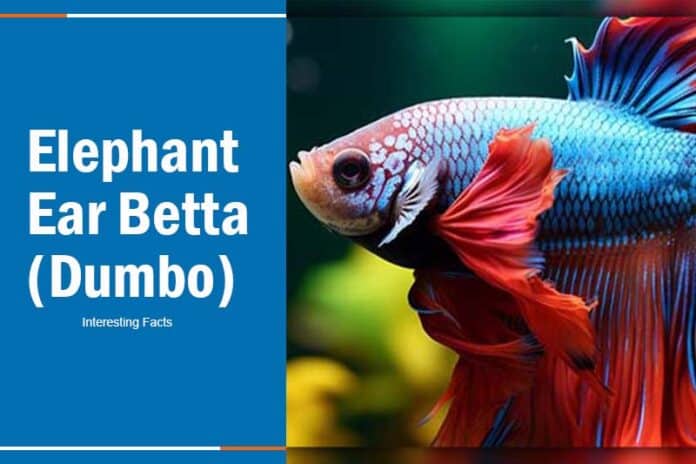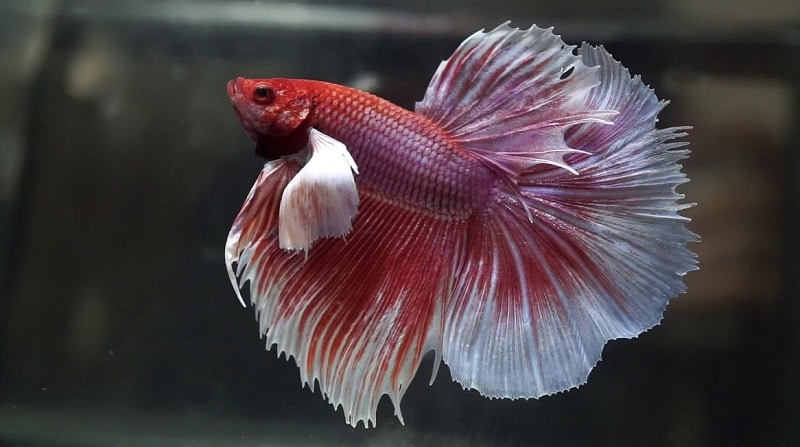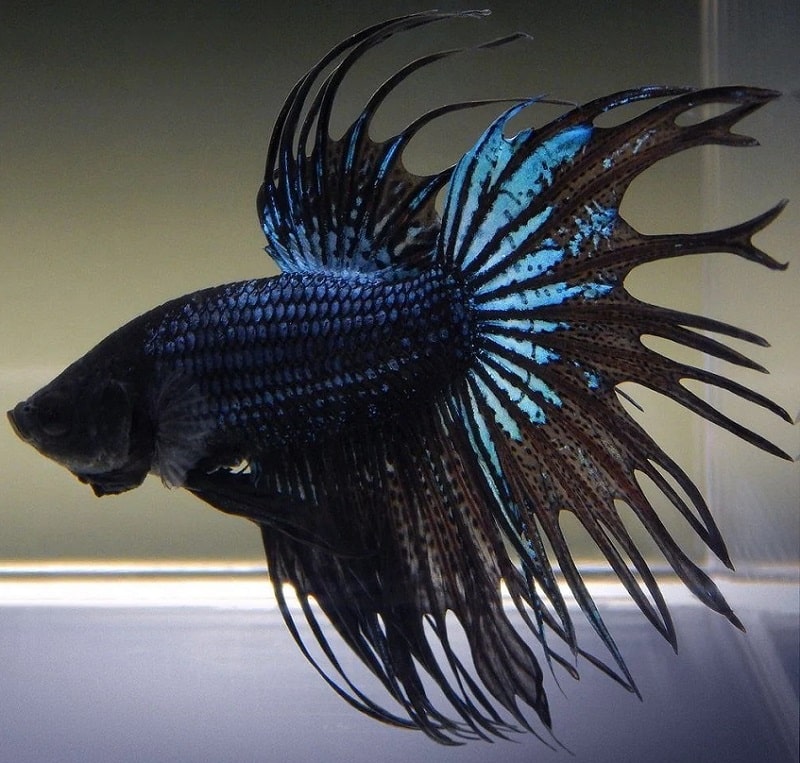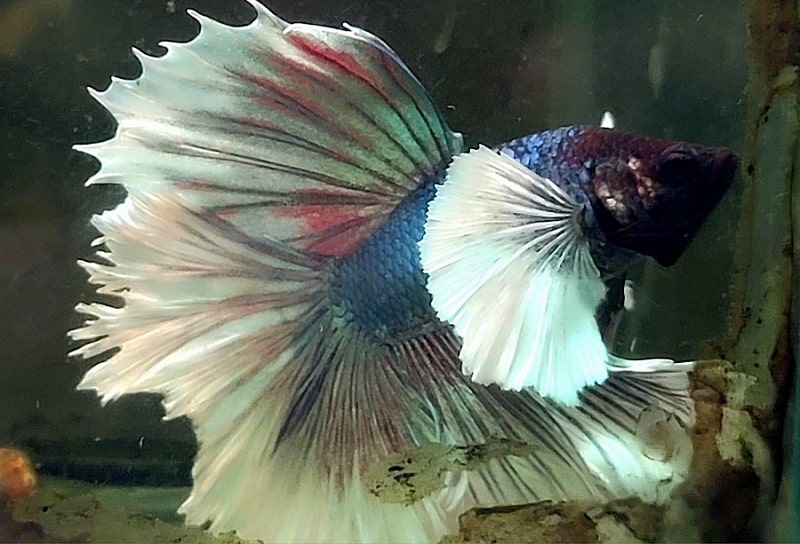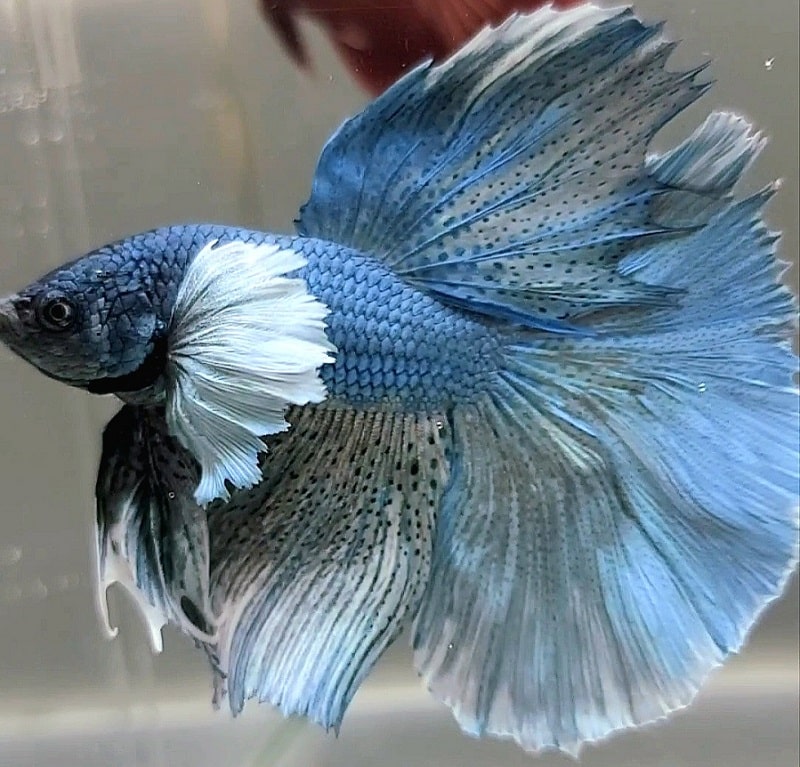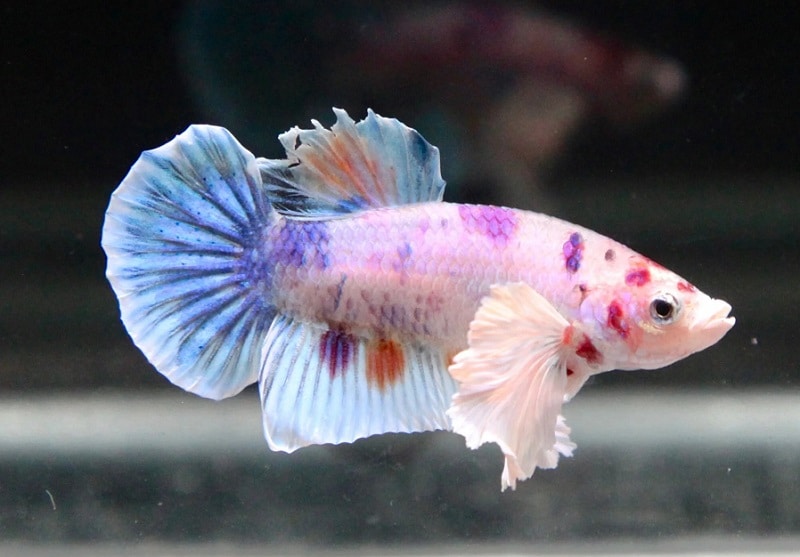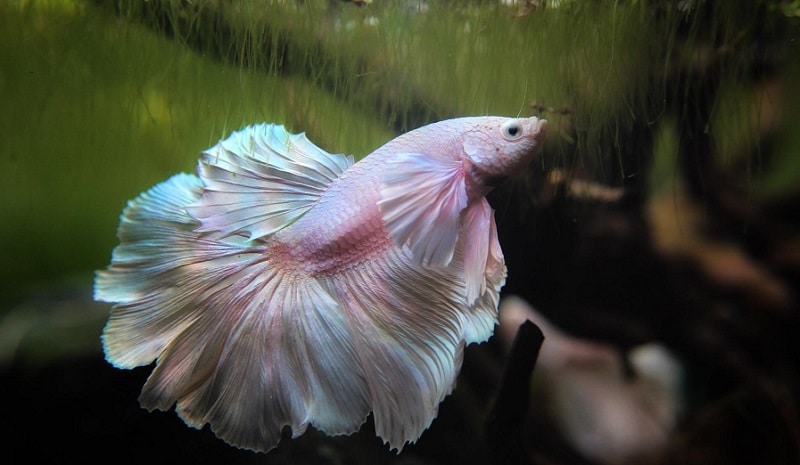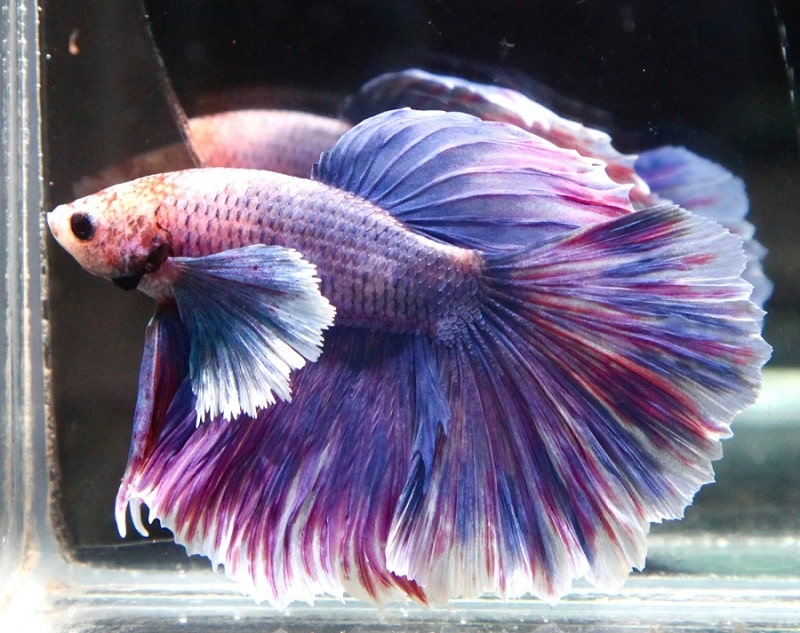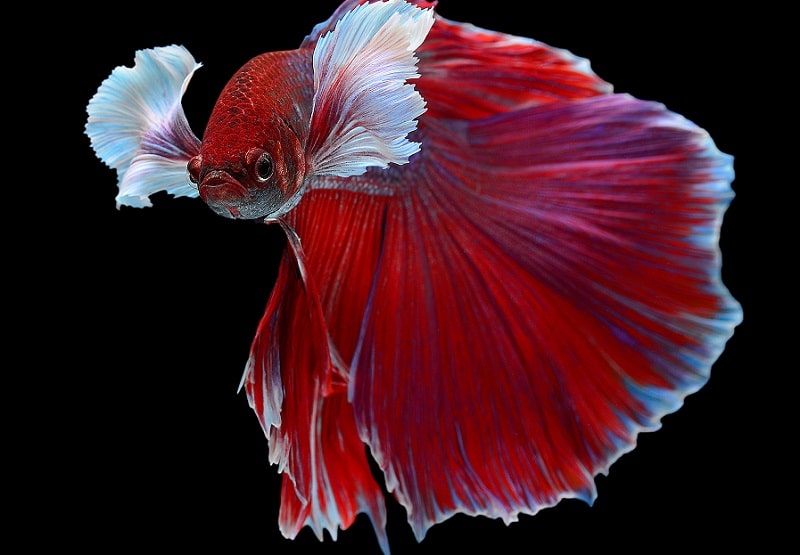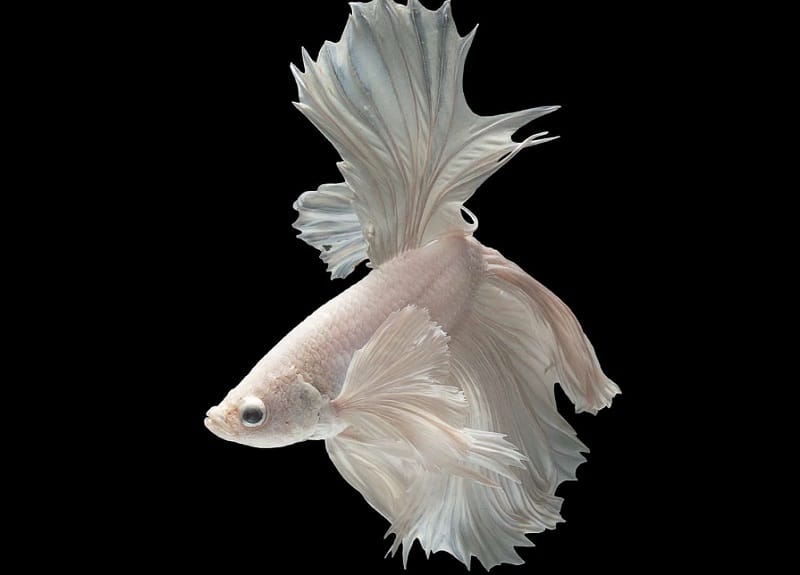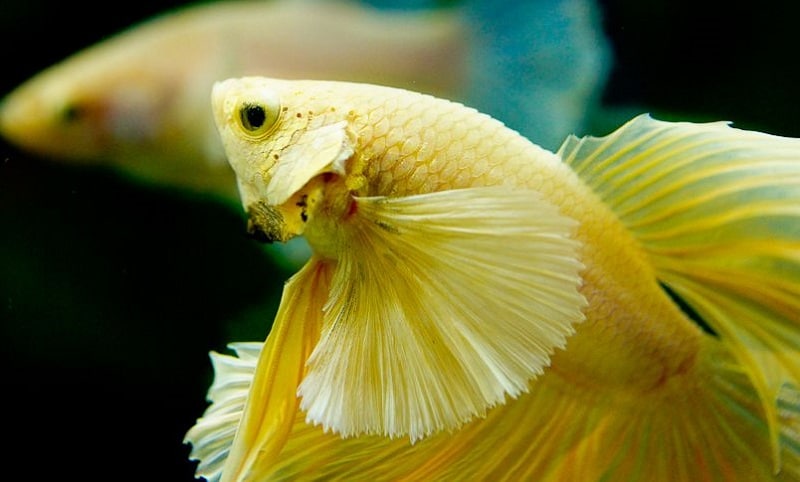The terms “elephant” and “dumbo” typically evoke images of something large. The Elephant Ear Betta, also known as the Dumbo fish, Siamese fighting fish, or Betta splenden, certainly lives up to this image. This Betta breed is highly territorial and aggressive, often fighting to the death if provoked.
In this guide, we will delve into the profile, colors, and variations of the Elephant Ear Betta. National Park Aquarium also provide guidance on how to properly care for and breed this unique species of fish.
Elephant Ear Betta Quick Fact Table
| Common Names | Elephant Ear Betta, Dumbo Betta |
| Scientific Name | Betta splendens |
| Adult Size | 2.5 to 3 inches |
| Lifespan | 3-5 years |
| Family | Osphronemidae |
| Origin | Southeast Asia |
| Temperament | Aggressive (especially males) |
| Compatibility | Best kept singly; can coexist with certain peaceful fish in larger tanks |
| Tank Mate | Bristlenose Plecos, Harlequin Rasboras, Otocinclus, Cory Catfish.. |
| Minimum Tank Size | 2.5 gallons (though 5+ gallons is recommended) |
| Diet | Carnivorous |
| Prey | Insects, small crustaceans |
| Habitat | Freshwater streams and rice paddies |
| Color | Various (blue, red, white, yellow, etc.) |
| Skin Type | Scales |
| Care Level | Intermediate |
| Breeding | Bubblenest breeders |
| pH | 6.0 – 8.0 |
| Water Hardness | Soft to moderately hard |
| Temperature | 76° – 82°F (24° – 28°C) |
| Favorite Food | Live foods like brine shrimp and bloodworms |
Origin Of The Elephant Ear Betta (Dumbo)
Elephant Ear Betta, or Dumbo Betta fish, is a captivating variant of Betta splendens from Asia’s Mekong Delta. With fins resembling elephant ears, they’ve transitioned from combat to become prized aquarium inhabitants. Native to the endangered Mekong Delta, their exotic charm enriches aquatic landscapes.
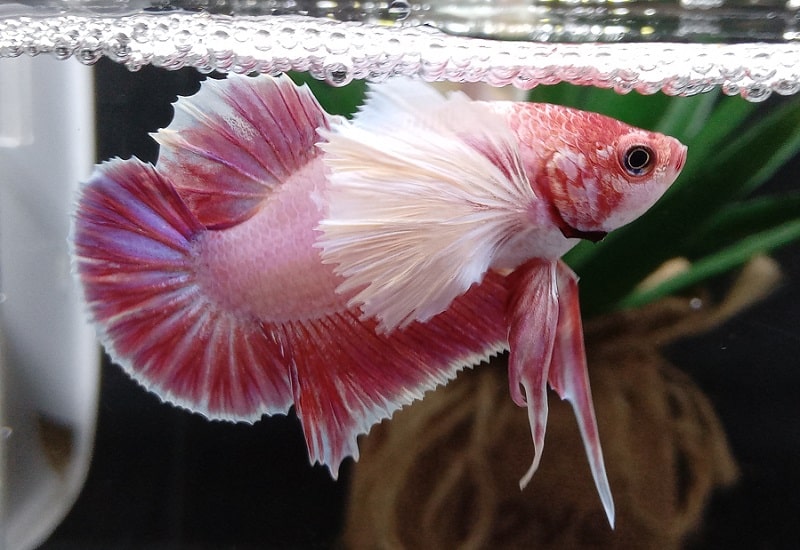
While adhering to general Betta care, their distinctive feature is their impressive fins. Once bred for aggression, today they’re cherished for their aesthetic appeal. The Elephant Ear Betta stands as a testament to nature’s underwater artistry.
Appearance
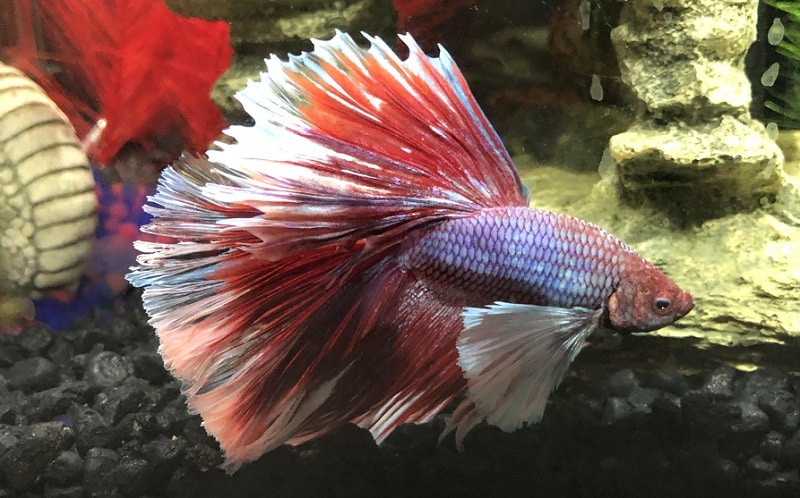
The Dumbo Betta fish is recognized for its slender physique and flamboyant fins. While they parade a spectrum of hues like blues, greens, and pinks in captivity, their wild counterparts don more muted shades of grey, green, and brown, blending seamlessly with their natural environment.
Their defining trait, the expansive fins and tail reminiscent of elephant ears, elevates their allure. Beyond the typical betta fin elegance, the Dumbo Betta’s fins are truly iconic in magnitude and beauty.
Elephant Ear Betta (Dumbo) Types
Elephant Ear Betta Female vs. Male
Distinguishing between male and female betta dumbo can be subtle:
Dumbo Betta Females are typically about ¼ inch smaller than their male counterparts. Though not starkly evident, seasoned breeders can discern this distinction.
While both genders are attractive, females usually have less vibrant colors and slightly less elaborate fins compared to the males.
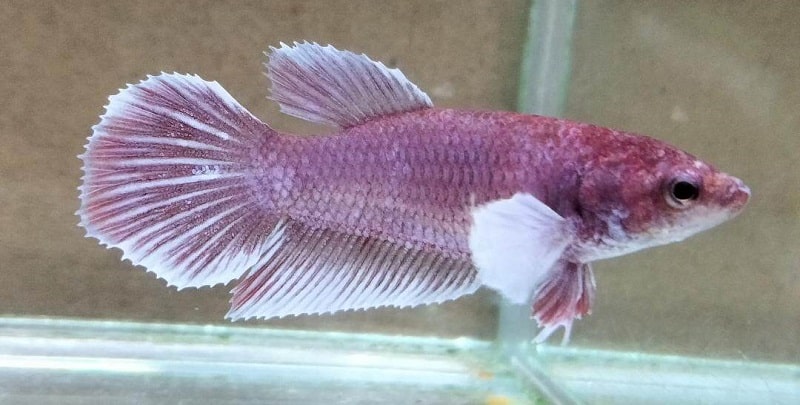
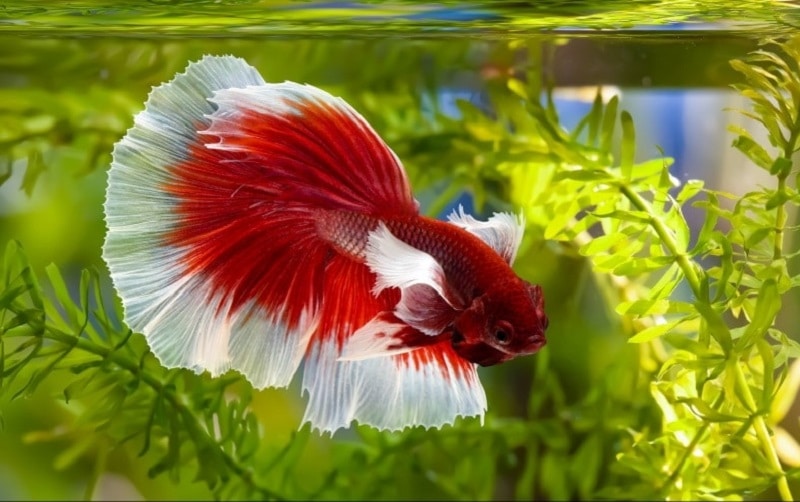
Life Span For Elephant Ear Betta
Elephant Ear Bettas, when cared for properly, typically live between three to five years. However, in optimal conditions, they’ve been known to thrive up to a decade. Their longevity is closely tied to the quality of care they receive. Attention to diet, living conditions, and overall well-being is paramount for these bettas to reach their potential lifespan.
Elephant Ear Betta Size
Dumbo Bettas, once fully grown, can reach lengths of up to 6.5 cm. Their slender body combined with their expansive fins can give the illusion of a larger size. To ensure their well-being and allow them to display their fins fully, it’s essential to house them in an aquarium spacious enough for free movement.
How Much Do Elephant Ear Betta Cost?
The Dumbo Betta is relatively affordable, with prices typically ranging from $10 to $20. The exact cost can vary based on color variations and the place of purchase.
How to Take Care of Elephant Ear Betta
Ensuring the well-being of your Elephant Ear Betta entails establishing an ideal environment for their health and happiness.
- Tank Size: To promote health and accommodate potential cohabitation, select a tank larger than 5 gallons.
- Plants: Populate the tank with live freshwater plants. They not only enhance the aesthetics but also provide natural aeration, contributing to a healthier habitat.
- Substrate: Opt for fine sand as the substrate. With a depth of a couple of inches, it offers a suitable medium for plant roots to anchor.
- Temperature: Maintain the water temperature within the range of 75-82°F (24-28°C). During colder months, consider using a heater to prevent temperature fluctuations.
- pH Levels: Best pH level for Betta between 6.8 and 7.5. This pH range supports the betta’s well-being and overall health.
- Decorations: When choosing decorations, opt for smooth surfaces to prevent any potential fin injuries. Safety is paramount for their comfort.
- Feeding: The best betta fish food that you can feed your Elephant Ear Betta fish is Betta-specific pellets or bloodworms.

Breeding
The process of breeding Elephant Ear Bettas involves more than just pairing them. It’s recommended to use a separate, substrate-free tank for breeding to protect the delicate fry.
The male elephant ear betta plays a crucial role in nest care. However, once the fry start swimming freely, it’s important to remove the male promptly to prevent him from preying on them.
As the young bettas mature, they will need to be separated or rehomed to avoid aggression or overcrowding.
While the breeding process isn’t overly complicated, it may take some practice and careful observation to achieve successful results.
Conclusion
The Elephant Ear Betta (Dumbo), with its magnificent fins and tails, is a visual delight in any aquarium. Ensuring the right environment is paramount to preserving their beauty and health. Recognized as one of the most captivating tropical fish, their distinct elegance and charm make them a favorite among both novice hobbyists and seasoned enthusiasts.

